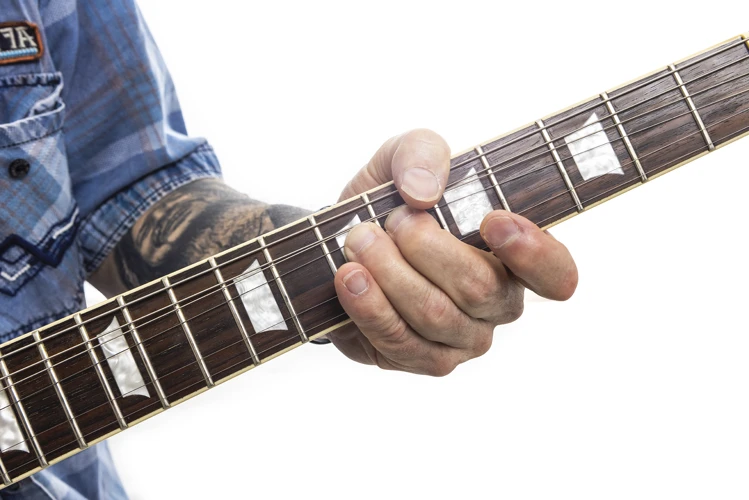Country music has a unique charm that is deeply rooted in the soulful sounds of the electric guitar. One of the key techniques that define the country guitar style is string bending. String bending adds emotion, character, and a touch of twang to your playing, making your guitar phrases truly come alive. In this article, we will explore some essential tips and tricks to master the art of string bending on the electric guitar, specifically tailored for country music enthusiasts.
Understanding String Bending
String bending is a technique where you physically push or pull a string across the fretboard to raise its pitch, creating a smooth and expressive sound. In country music, string bending is often used to mimic the sound of pedal steel guitars, adding a distinctive flavor to your playing. To execute a string bend effectively, you need to have a good grip on the string with your fretting hand and use your wrist and fingers to apply controlled pressure.
Tip 1: Start Slow
When you are new to string bending, it’s essential to start slow and gradually build up your strength and accuracy. Begin by practicing simple half-step bends on the lower strings, focusing on hitting the target pitch precisely. Use your ear to guide you and make sure each bend sounds clean and in tune. As you gain confidence, you can experiment with larger bends and incorporate them into your licks and solos.
Tip 2: Use Proper Technique
Proper technique is crucial for executing string bends smoothly and effortlessly. Make sure to place your thumb behind the neck for support and use your fingertips to press and guide the string during the bend. Avoid using excessive force or relying solely on your fingers; instead, engage your wrist and arm to provide the necessary power for the bend. Practice bending with different fingers and on various strings to develop a well-rounded skill set.
Tip 3: Focus on Pitch Accuracy
One of the hallmarks of a great country guitarist is their impeccable pitch control during string bends. To improve your pitch accuracy, practice bending the string to specific intervals, such as a half-step, whole step, or even larger intervals. Use a tuner or backing track to check your intonation and make adjustments as needed. Developing a keen ear for pitch will elevate your playing and make your string bends sound professional and polished.
Exploring Different Bending Techniques
In country music, there are several bending techniques that are commonly used to create signature licks and solos. By mastering these techniques, you can add texture and dynamics to your playing, capturing the essence of traditional country guitarists.
Tip 4: Pre-Bends and Releases
Pre-bends are a classic country guitar technique where you bend a string before picking it, creating a subtle and expressive effect. To execute a pre-bend, bend the string to the desired pitch, pick the note, and then release the bend slowly to return to the original pitch. This technique adds a vocal-like quality to your playing and can be used to create emotive phrases and melodic hooks.
Tip 5: Double-Stop Bends
Double-stop bends involve bending two strings simultaneously to create a harmonized effect. This technique is commonly used in country music to add depth and richness to chord progressions and lead lines. Experiment with bending different intervals, such as thirds or fourths, to discover unique and captivating sounds that will set your playing apart.
Tip 6: Unison Bends
Unison bends involve bending one string to match the pitch of another unbent string, creating a powerful and resonant sound. This technique is a staple in country guitar playing and can be used to emphasize key notes in a melody or add tension and release to your solos. Practice unison bends in various positions on the fretboard to expand your tonal palette and enhance your musical expression.
Developing Your Bending Style
As you delve deeper into the world of country guitar string bending, it’s essential to develop your unique style and voice as a player. By combining different bending techniques, experimenting with phrasing and dynamics, and infusing your personality into your playing, you can create captivating and memorable performances that resonate with listeners.
Tip 7: Listen to Country Guitar Legends
One of the best ways to hone your bending skills and expand your musical vocabulary is to listen to and study the playing of country guitar legends. From pioneers like Chet Atkins and Merle Travis to modern virtuosos like Brad Paisley and Brent Mason, each guitarist brings a distinct flavor and approach to string bending. Analyze their phrasing, tone, and bending techniques, and incorporate elements that inspire you into your own playing.
Tip 8: Experiment with Vibrato
Vibrato is a subtle yet powerful embellishment that can enhance your string bends and add an extra layer of expressiveness to your playing. After executing a bend, gently rock your finger back and forth to create a shimmering vibrato effect that adds warmth and character to the note. Experiment with different vibrato speeds and widths to find a style that complements your playing and evokes the desired emotion.
Tip 9: Combine Bending with Slides and Hammer-Ons
To take your string bending to the next level, consider incorporating slides and hammer-ons into your phrases to create fluid and seamless transitions between notes. Experiment with bending a note, sliding to another position on the fretboard, and executing a quick hammer-on to add complexity and movement to your lines. This combination of techniques will enhance your phrasing and bring a dynamic quality to your playing.
Looking to improve your country guitar skills? Check out our articles on guitar string gauges, acoustic guitar strumming tips, rhythm guitar tips for country music, fuzz pedals for country guitar, and amplifier tips for achieving the perfect country guitar tone for valuable insights and techniques to enhance your playing!
Conclusion
Mastering the art of string bending on the electric guitar is a rewarding journey that requires patience, practice, and dedication. By following these tips and techniques tailored for country guitarists, you can elevate your playing and unlock a world of expressive possibilities. Remember to start slow, focus on pitch accuracy, explore different bending techniques, and develop your unique style to create captivating country guitar performances that resonate with audiences. Embrace the twang, the emotion, and the soulful sounds of string bending, and let your guitar sing with the heart and spirit of country music.



